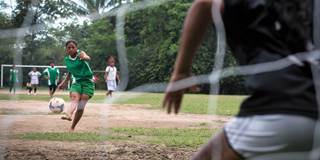
Why Governments Should Invest in Sports
Latin American and Caribbean countries spend about one-third as much as their European counterparts on sports programs with broad social goals. But, before increasing that investment, policymakers should commit to testing and evaluating various strategies to find out which ones actually work.
WASHINGTON, DC – As the World Cup unfolds, captivating soccer fans around the globe, the broad appeal of high-level sports is on full display. But the impact of sports extends far beyond major international events, as impressive they may be, to include far-reaching benefits for ordinary people.